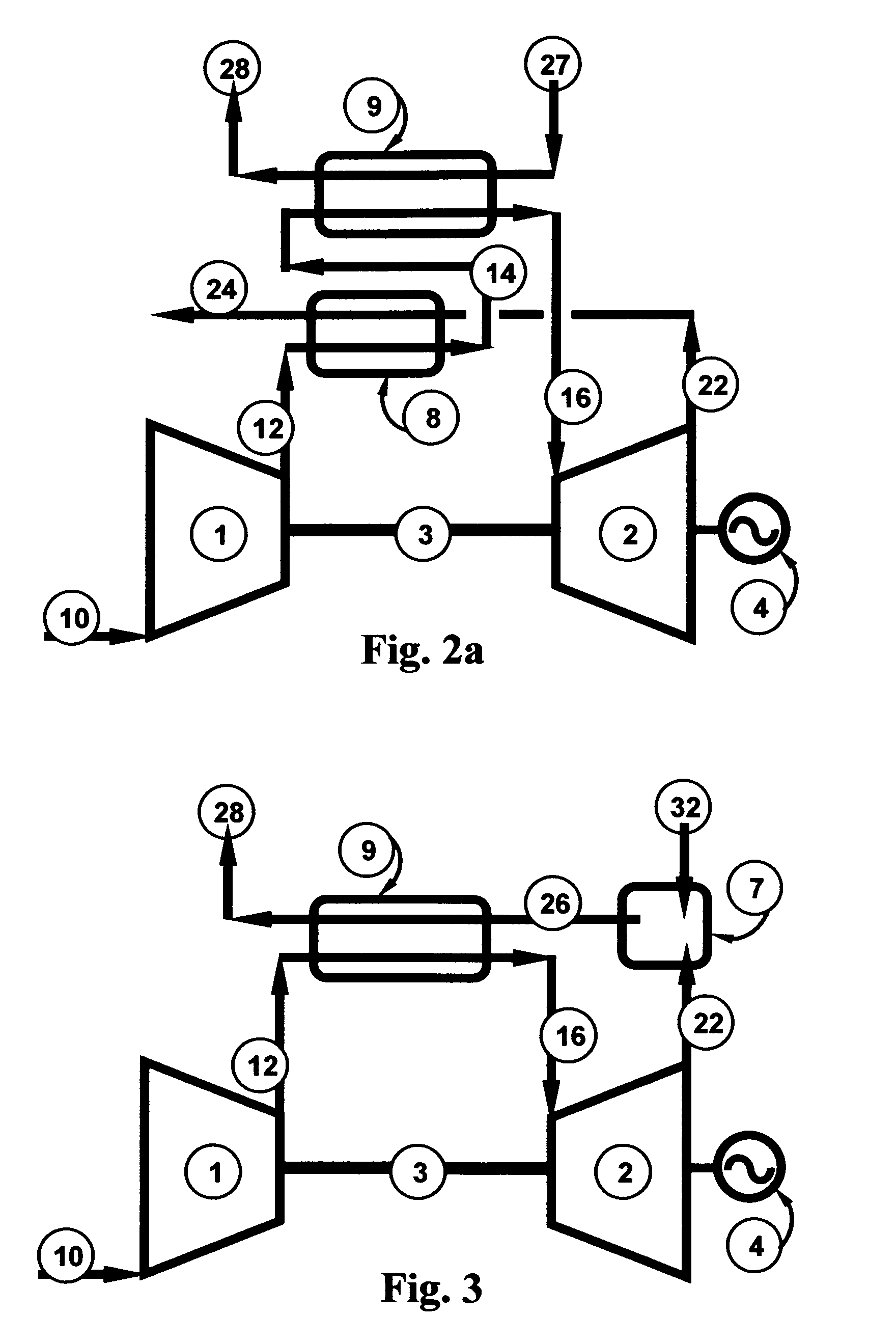Hybrid Brayton cycle with solid fuel firing
a brayton cycle and solid fuel technology, applied in the field of power generation, can solve the problems of inability to demonstrate the power and efficiency levels of the system to justify itself economically, the cost of higher complexity and cost, and the practical equipment is limited in the pressure ratio that can be efficiently operated, so as to achieve the effect of reducing the total cost of production, increasing the mass of flow through the turbine, and speeding up the response tim
- Summary
- Abstract
- Description
- Claims
- Application Information
AI Technical Summary
Benefits of technology
Problems solved by technology
Method used
Image
Examples
Embodiment Construction
[0053]Thermodynamic analysis shows that operating equipment from said example of FIG. 1 in the configuration of FIG. 4, “Recuperated Hybrid Brayton Cycle With Independent Heat Source”, with said common input parameters and operating at a slightly lower rotational speed of shaft (3) for best efficiency results in said comparison maximum power production of 100% (equal to said example of FIG. 1) and overall efficiency about 16.3%. These results assumed a temperature for heater spray (36) and recuperator spray (34) of 60° F. (15.6° C.) and volume flow of each sufficient to generate 90% relative humidity downstream. Cooled exhaust (24) is 378° F. (192° C.), is clean with full oxygen content and is available as a source of heat or hot combustion air.
[0054]Thermodynamic analysis shows that operating equipment from said example of FIG. 1 in the configuration of FIG. 5, “Recuperated Hybrid Brayton Cycle With Dependent Heat Source”, with said common input parameters and operating at a slight...
PUM
 Login to View More
Login to View More Abstract
Description
Claims
Application Information
 Login to View More
Login to View More - R&D
- Intellectual Property
- Life Sciences
- Materials
- Tech Scout
- Unparalleled Data Quality
- Higher Quality Content
- 60% Fewer Hallucinations
Browse by: Latest US Patents, China's latest patents, Technical Efficacy Thesaurus, Application Domain, Technology Topic, Popular Technical Reports.
© 2025 PatSnap. All rights reserved.Legal|Privacy policy|Modern Slavery Act Transparency Statement|Sitemap|About US| Contact US: help@patsnap.com



